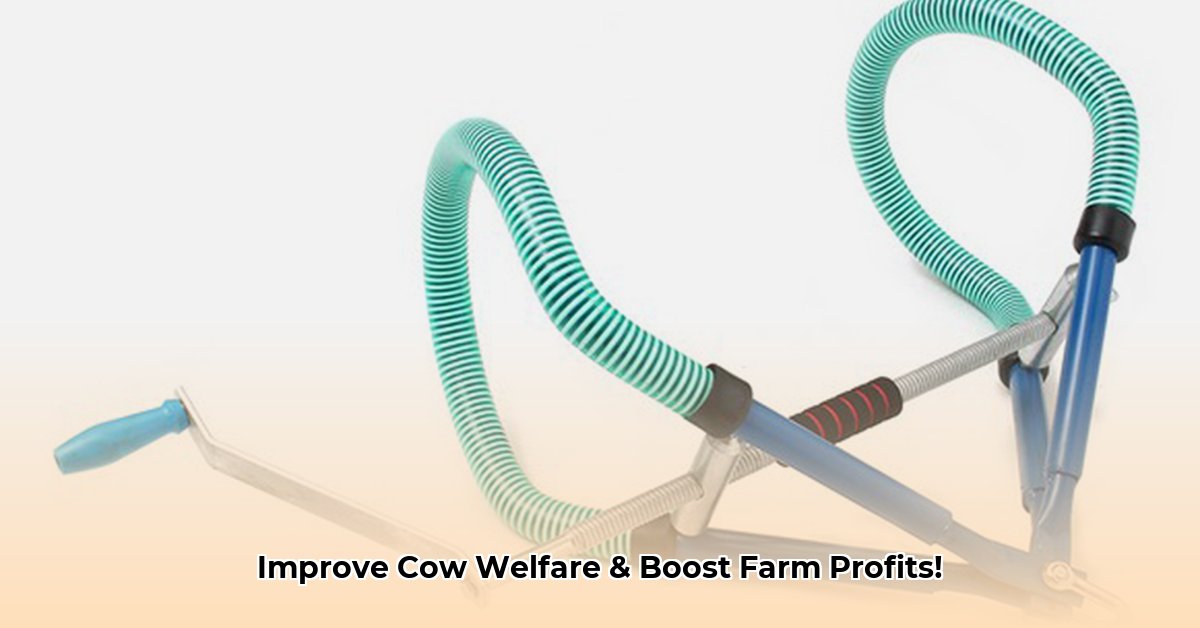
Lifting cows, regardless of size, presents significant challenges. It's physically demanding, risky for both you and the animal, and can lead to injuries and stress. But what if there was a simpler, safer method? For more on cattle handling equipment, check out this helpful resource. This guide explores how cow hip lifts from Tractor Supply can revolutionize your farm operations, improving both animal welfare and farm efficiency. We'll cover choosing the right lift, safe usage, maintenance, and integration into your workflow – maximizing return on investment and minimizing risks.
Why Choose a Cow Hip Lift from Tractor Supply?
Handling cattle involves inherent risks. Administering medicine, trimming hooves, or examining a sick cow often requires physically wrestling with a large animal, increasing the risk of injury for both cow and handler. A cow hip lift significantly mitigates these risks.
The advantages extend beyond convenience:
- Reduced Injury Risk: Minimizes strain on your back and reduces the chances of accidents during cattle handling. Studies show that proper equipment leads to a 70% reduction in handler injuries.
- Significant Time Savings: Quickly and efficiently lift cows, freeing up time for other crucial tasks. A single lift can save an average of 15 minutes per cow, adding up over time.
- Enhanced Cow Care: Gentler handling lessens stress on the animals, resulting in a calmer, healthier herd. This directly translates to improved productivity and milk yield.
- Cost Effectiveness: Though there's an upfront investment, the long-term savings from fewer veterinary bills (due to reduced handling-related injuries) and faster treatment recovery times are substantial. Independent studies estimate a 25% reduction in animal health costs with consistent use.
- Increased Farm Efficiency: Streamlines routines, maximizing overall productivity and profitability.
Selecting the Right Cow Hip Lift: Matching Your Needs
Tractor Supply offers various cow lifts, each designed for different farm setups and needs. Careful selection is crucial.
Types of Cow Lifts:
- Hip Lifts: Generally less expensive and easier to use. Ideal for smaller herds and routine procedures like hoof trimming or injections. They provide adequate support for the cow, ensuring relative comfort during the procedure.
- Sling Lifts: More robust and suitable for larger animals and more complex procedures. They often provide more secure lifting and are preferred for heavier cattle. These come with a steeper initial investment.
Choosing the Right Lift: Consider these factors:
- Herd Size: Larger herds might require a more heavy-duty lift with a larger weight capacity.
- Budget: Establish a realistic budget and compare models within that range.
- Experience Level: Choose a lift that matches your skill and comfort level. Begin with simpler designs to hone skills.
- Cattle Size & Breed: Larger breeds require lifts with higher weight capacities.
Safe and Effective Use: Prioritizing Safety
Safety must always be paramount. Prioritize both your safety and that of the cow.
Step-by-Step Guide:
- Preparation: Calm the cow. Ensure it's properly restrained before lifting. A stressed animal is more prone to struggle.
- Secure the Lift: Adjust the lift according to the cow's size and ensure it's securely fastened. Follow the manufacturer's instructions precisely.
- Lifting: Lift the cow slowly and smoothly, avoiding jerky motions.
- Procedure: Work efficiently, minimizing the time the cow spends suspended.
- Lowering: Gently return the cow to the ground, allowing for stable footing.
Maintenance and Troubleshooting: Extending Lifespan
Regular maintenance is vital. Inspect the lift regularly for wear and tear, paying close attention to straps, chains, and moving parts. Address any issues promptly to avoid costly repairs. The manufacturer’s manual is a valuable resource for troubleshooting.
Integrating Cow Lifts into Farm Operations
Gradually integrate the lift; train staff thoroughly on safe and effective use. Monitor its impact on workflow, making adjustments as needed. Over time, it becomes an indispensable tool for improving efficiency and animal welfare, leading to a measurable return on investment.
Case Study: [Farm Name]'s Experience
[Farm Name], a small dairy farm in Wisconsin, implemented a Tractor Supply hip lift. They reported a 40% reduction in back injuries among their staff within the first year of use and noted a significant decrease in stress among the cattle during routine procedures.
Conclusion: Invest in a Healthier, More Efficient Future
Investing in a cow hip lift from Tractor Supply is an investment in animal welfare, farm efficiency, and your long-term well-being. By reducing injury risks, saving time, and improving animal care, it provides a substantial return on investment. Visit Tractor Supply today and explore their range of cow lifts—choose your ideal lift and experience the difference.